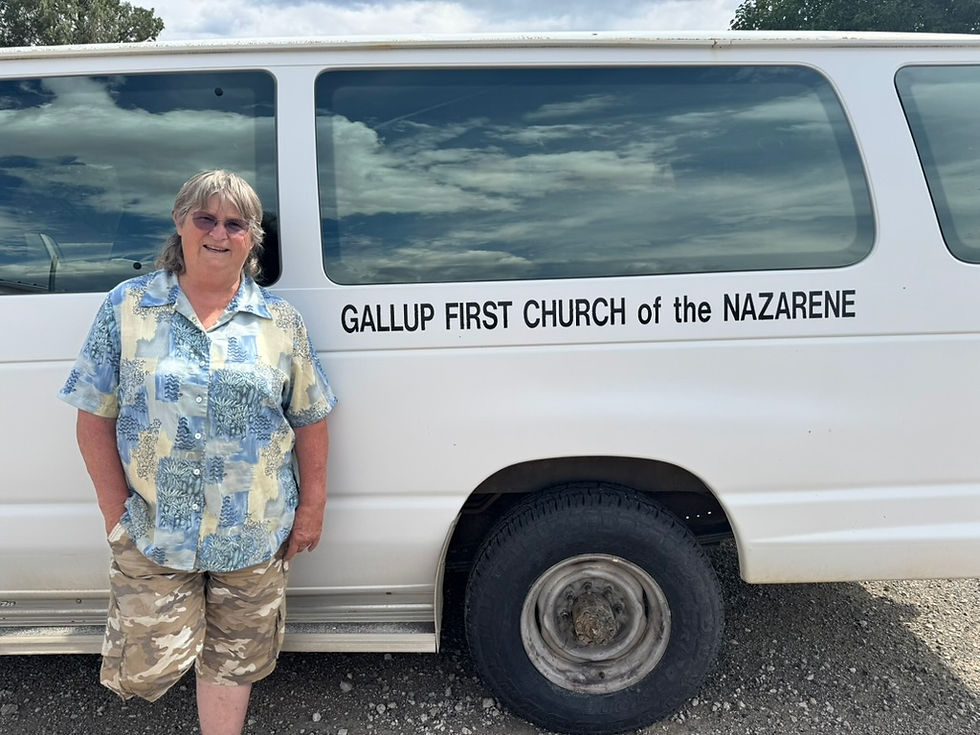Idaho Tribe Scales Firewood Program for Efficiency, Crisis Prevention, and Sustainability
- Hannah Stinson
- Nov 15, 2024
- 4 min read
Updated: Nov 18, 2024

The Shoshone-Bannock Tribe is located on the Fort Hall Reservation across the Snake River Plain in southeastern Idaho and is one of five federally recognized tribes in the state. The Fort Hall Reservation has five districts covering 814 sq. miles and a population of around 5,300 people. The tribal government has a variety of programs that have grown tremendously in the years during and following the COVID-19 pandemic.
When resources were scarce tribal administrative leaders directed the majority of their energy towards securing grants and financial assistance in areas where tribal members were in the most need. I met with Dustin Davis who seeks out partnerships and funding opportunities as their grant manager. He explained how they have grown the wood programs with the available grants and expanded their abilities to be more efficient. One example is that they created a firewood program that has doubled in size for clients being served during the winter season by providing heating fuel for close to 200 households.

For the existing homes, they have grown their LIHEAP weatherization program using a combination of both tribal and federal funding. Not only do they offer weatherization workshops that provide the supplies and demonstrations of how to improve energy efficiency with simple DIY fixes, but they also educate on fire safety and install smoke and carbon monoxide detectors in homes. Wood-burning homes that are in need of a chimney cleaning can have their flue cleaned by the tribe, and wood stoves that are known as the primary heating appliance are inventoried in a tribe database in order to track which vulnerable people are using an unsafe stove.
Since many homes eligible for heating assistance used firewood as their primary heating fuel they coordinated a stove swap-out program with the Department of Energy: Air Quality Program and are slowly addressing older wood stoves being replaced. Power outages are common in rural areas, during the winter of 2023 a power outage lasted two days, leaving everyone with an electric furnace in a really bad condition. Backup biomass heat will always be popular and wood stove installations are becoming more regular even in new builds.
The financial security allowed them to recruit a full-time, year-round crew that sources, processes, and delivers firewood for their heating assistance and firewood program. Anywhere from two to four cords of split and seasoned firewood is delivered to tribal residents requesting wood for energy assistance. They determine eligibility based on income, and priority status like age, ability, and minors in the household. Low-income eligible clients requesting wood for heating assistance will receive four cords and tribal member clients who are over income receive two cords. It is important the program assists clients with the lowest of incomes with the highest of need.

In order to accommodate all wood-burning households the firewood program has intentionally grown its administrative side. The program is set up to be ahead of the demand for firewood instead of a response to crisis. Although they would provide wood to a person in a crisis, the proactive approach that begins processing firewood requests in September has allowed them to stay ahead of the demand for wood from their program. This helps when clients who apply can have their wood delivered in the matter of days instead of waiting months due to popular demand of the program.

"A 4-person crew uses 3 trucks, 4 splitters, 6 chainsaws, and 3 trailers to deliver hundreds of cords of firewood every winter."
-Lloyd Woodlot and Crew Manager

Raelynn Appenay, the consumer service coordinator and direct point of contact for program applicants, took me on a tour of the Shoshone-Bannock firewood lot. Once we arrived we met Lloyd the wood crew lead who boasted about the trailers of wood they had already delivered to homes. This is the first year they partnered with Wood for Life and recovered the bulk of their long logs from a timber project in the Sawtooth Mtns.; this partnership has opened up a large portion of their budget previously spent on fuel logs and firewood. At least 200 homes receive firewood through their heating assistance and firewood program. A 4 person crew uses 3 trucks, 4 splitters, 6 chainsaws, and 3 trailers to deliver hundreds of cords of firewood every winter.

Additional ways the Shoshone-Bannock assist their community with using wood as a heating fuel is with summer programs that encourage able-bodied individuals to harvest firewood using tools provided by the tribe. Around eight families benefit from this opportunity but they are eager to grow. The person requesting assistance secures a tribal firewood permit with the Forest Service then together with sawyers from the firewood crew they go out and harvest fuel logs from the National Forest using personal protective gear, chainsaws, trucks, and trailers provided by the tribe’s firewood program. Because the Shoshone-Bannock tribe believes in empowering its people they are partnering with us, the Alliance for Green Heat, to promote Burn Wise education materials to their wood-burning homes and engage their community with their indoor air quality in the winter.
We learned so much from the impact firewood programs have on tribal communities and thank the Shoshone-Bannock people, and Lloyd, Dustin, and Raelynn for their willingness to share about their successes and goals with scaling their firewood program.






















Comments